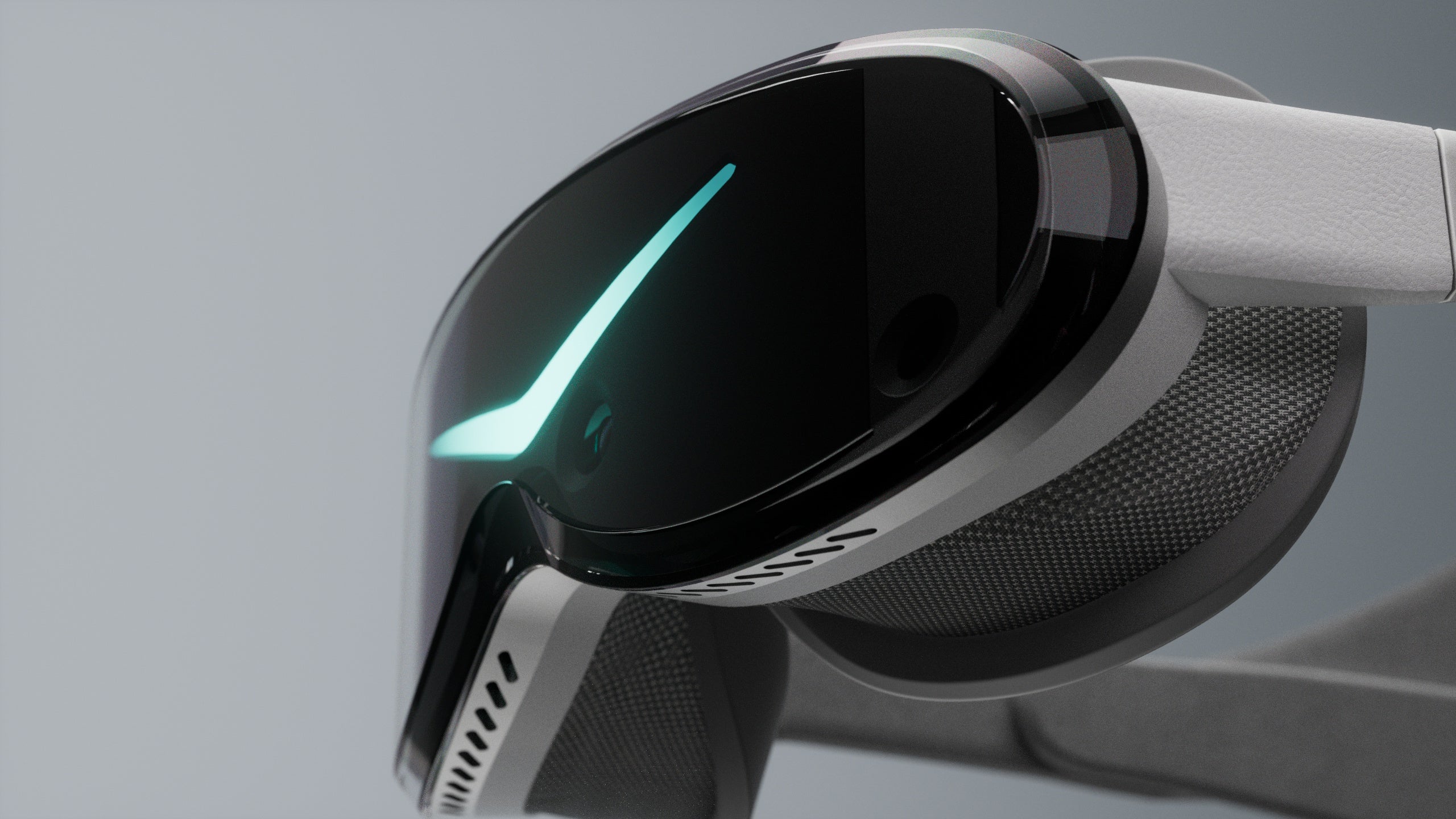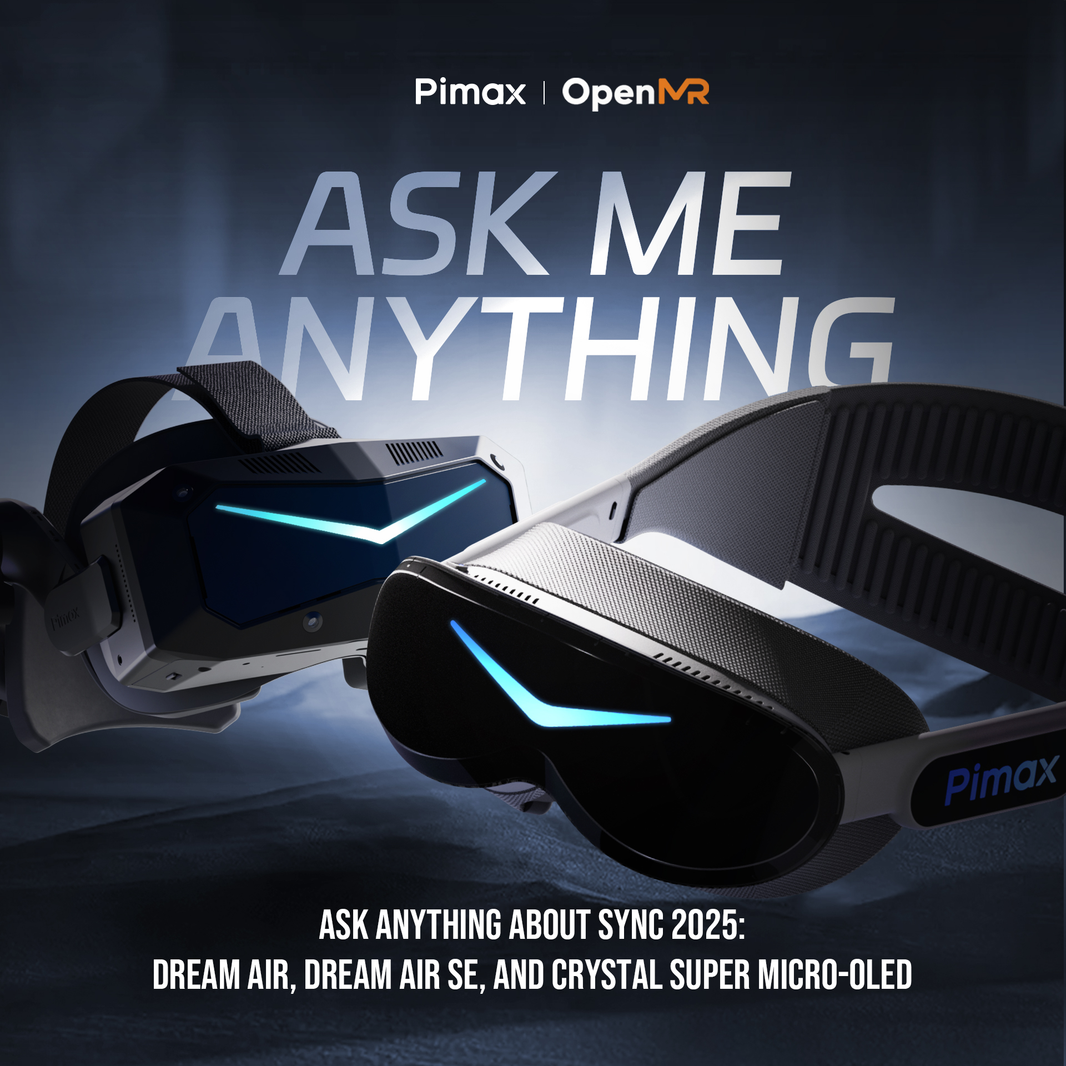Hello Pimax Dream Air!
The Pimax Dream Air is the world's smallest, full-featured 8K VR headset, packed with cutting-edge technology including 27-megapixel resolution, head-hand-eye tracking, integrated spatial audio, DisplayPort connectivity, and auto-adjusting straps.
The Dream Air inherits many components from Pimax's Crystal Super. In particular, the micro OLED panel and pancake lenses are integrated into a compact and lightweight design while maintaining the same high technical standards as previous Pimax headsets. This new design represents Pimax's challenge to provide a compact yet high-performance VR experience, truly embodying the future of VR experiences.
The Pimax Dream Air is an evolution of the PC VR headset, designed in a different direction from previous Pimax series headsets. It offers incredible resolution and functionality while being highly portable for everyday entertainment, light gaming, travel, and any occasion.
To uncharted territory
At Pimax, we're constantly pushing the boundaries: higher resolution, wider viewing angles, and sharper images. It's always been this way and it's deeply rooted in our DNA. But this time, we want to push the envelope in a new dimension: size.
The Pimax Dream Air is the first Pimax headset to be designed with a compact design without sacrificing functionality or clarity. The Crystal series offers the highest resolution and comfort, especially for simulator gamers, providing an immersive experience that no other brand can match. Meanwhile, the Dream Air focuses on lightweight, compact size, and portability while still providing excellent visual effects.
Design Concept
The Pimax Dream Air is a lightweight and compact device that Pimax has developed for a new audience, with a new design approach and a sleek look.
Previous Crystal series models (5K, 8K, etc.) have had very avant-garde designs.
The design is characterized by its angular, blocky design with almost no curves. This design gives off a sense of strength and power, and has a somewhat industrial feel. This type of industrial design is very suitable for certain use cases.
For example, there are common design approaches seen in the steering wheels and racing seats of racing simulators, and the cockpits of F16s.

However, the Dream Air has a more modern and sophisticated design. It emphasizes fashion, incorporates curved lines, and uses new materials that are different from traditional ones. It has a friendly, soft and gentle impression, and is characterized by its lightweight and compact size. But of course, the front still has Pimax's signature V-shaped design, and the inside is still packed with Pimax technology.

weight
The headset itself is incredibly lightweight, weighing less than half the weight of a bottle of Coca-Cola, which is surprising for a full-featured VR headset with 8K resolution.

This gives you 27 megapixel resolution, integrated eye, hand and inside-out tracking, and integrated audio, all in a compact package that uses a Display Port connection to deliver uncompressed video at 90Hz.

Convenience
Dream Air is designed with compact size and convenience in mind. Its ultra-lightweight and small body makes it so comfortable you'll forget you're wearing a VR headset.
- You can put it in your backpack and take it on a trip, or watch a movie while lying on the sofa or in bed, and enter the world of VRChat anytime, anywhere.
The straps are strong yet flexible to fit all sizes and provide a comfortable, ergonomic position.
The soft straps are self-adjusting. Like the shoes in Back to the Future, pressing the center button automatically adjusts the headset to the ideal strength for stability and comfort.
- The front is equipped with a cooling system that uses a vapor chamber, enabling a lightweight and compact VR experience.
- The cable used is a thin, flexible, and lightweight Type-C DisplayPort cable.

Dream Air Specifications

Panel and Optical Technology
The Pimax Dream Air uses the same Micro-OLED optical engine as the Crystal Super. The two headsets share key components, such as the panel, lenses, and bridge chip, and there are few differences in the software.

This allows the Pimax Dream Air to deliver a high-quality viewing experience and has the same performance as the Crystal Super, but in a more compact and portable design.

The Pimax Dream Air is a cutting-edge, fully-featured 8K VR headset. Like the Crystal Super, it uses Micro-OLED panels, each with a resolution of 3840 x 3552 pixels and a refresh rate of 90Hz.
It offers the highest resolution of any Micro- OLED panel available today, delivering crisp, clear images without compression. Inside the headset is a dedicated bridge chip and onboard processor, which play a key role in delivering high-resolution images at 90Hz.

Dream Air uses our proprietary pancake lenses, which are not only small enough to fit in the headset, but are also engineered to provide a larger sweet spot and a wider field of view (FOV). These lenses use the same technology as Crystal Super.
Tracking Technology
Dream Air is packed with advanced tracking technology to deliver a highly immersive VR experience in a portable and compact design.
Dream Air is our fourth SLAM tracking-enabled headset, featuring four integrated cameras that support six degrees of freedom (6DoF) head motion tracking.
Unlike traditional base station tracking, Dream Air uses inside-out tracking, providing a hassle-free experience without the need for a base station, allowing you to move from your gaming room to your living room, or even use it with your laptop on the train.
The Dream Air comes with a ringless controller with haptic feedback, but if you forget your controller, gesture control lets you keep your hands free.
Sound system
The Dream Air's audio system is designed to add an extra layer of immersion to the user's experience.
- Equipped with a full open-back audio system, it captures the sounds of your surroundings to provide a realistic sound experience.
- Integrated headphones deliver studio-quality sound for all your entertainment, including games, movies, and music.
- Features advanced spatial audio technology and a design that emphasizes sound field expansion and positioning.

Cobb
The Dream Air is a product that prioritizes portability, but if you plan to use it on a train or plane, you may find it inconvenient to carry your PC with you. That's where Cobb comes in.
Cobb is a small pack with a built-in Snapdragon XR2 chip and battery that lets you use Dream Air in more ways than ever before without a PC. It can stream movies and light applications, and it can be clipped to a belt or placed on a table for VR experiences.
Comparison with Crystal Super
Dream Air and Crystal Super are products with different targets.

The Dream Air offers high resolution and full functionality while prioritizing compact size and portability, while the Crystal Super is designed with visual quality as its top priority, providing an uncompromising viewing experience.
Crystal Super is the ideal choice for those seeking the ultimate in visual experience and performance, and its modular design allows you to swap out the optical engine for QLED or Micro- OLED.
Dream Air is ideal for those who prioritize convenience while still wanting to enjoy a high-resolution VR experience in a variety of situations, including everyday entertainment, light gaming, and travel.
About pre-orders
The Dream Air is scheduled to ship in May 2025, but pre-orders are available now.

Prime plan:
Lump sum payment (12% discount): 226,099 yen (tax included) + 119,243 yen (tax included)
Installment payment: 226,099 yen (tax included) + 5,646 yen/month (24 months) (tax included)
We are also currently accepting full orders for the 60G Airlink, which will ship early next year. In addition, we are also in the process of producing the new Crystal series for users who want wireless PC VR.








